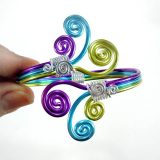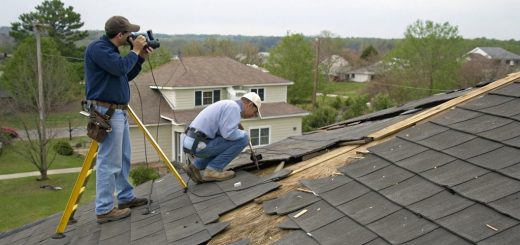How to Clean Silver at Home
Discover easy, effective ways to clean silver at home using everyday items. Restore shine to tarnished silver without harsh chemicals. This guide covers DIY methods, science, and tips for lasting results.
Why Silver Tarnishes and How to Prevent It
Silver tarnishes when it reacts with sulfur in the air. This forms silver sulfide, a black layer on silver items. Household silver like flatware or jewelry suffers most.
However, you control this. Store pieces in anti-tarnish bags or cloth. Avoid contact with rubber or eggs, which speed tarnish.
Research from the American Chemical Society shows tarnish starts in days under high humidity. Keep silver dry and cool.
Moreover, polish regularly. Use a soft cloth after each use. This removes early buildup.
For example, vintage twin silver urns stay bright with weekly wipes. Thrifted decor or secondhand silver items need extra care at first.
Transitioning to cleaning, understand the chemical reaction. It reverses tarnish safely.
The Baking Soda and Aluminum Foil Method: A Classic DIY
Gather baking soda, aluminum foil, hot water, and a baking dish. This electrochemical reduction turns silver sulfide back to silver.
Line the dish with foil, shiny side up. Add silver items without touching. Sprinkle ARM & HAMMER™ Baking Soda generously.
Next, pour boiling water to cover. Watch bubbles form as aluminum sulfide creates the reaction.
Soak for 5-10 minutes. Flip pieces halfway. Use tongs for safety.
Then, rinse with cool water. Dry with a soft cloth or microfiber cloth.
This works on sterling silver, silver flatware, and silver-plated jewelry. Avoid on silver handles or silver stems with glue.
Additionally, add salt for tougher tarnish. One tablespoon boosts the process.
Studies from university labs confirm this electrolytic reaction removes oxidized tarnish efficiently.

Using Silver Polish and Creams for Deep Shine
Commercial options like Wright’s Silver Cream or silver cream polish deep tarnish well. Apply with a damp sponge.
Rub in circles. Focus on grooves of silver items. Let sit for minutes on heavy buildup.
After that, rinse thoroughly. Buff with a cotton silver cloth.
However, choose non-abrasive types. Wright’s Anti-Tarnish polish prevents future issues.
For solid silver or household silver, use silver polish sparingly. Overuse wears surfaces.
Combine with a silver brush for details. This reaches crevices on vintage metals.
Moreover, Hagerty’s silver polishing gloves make the job hands-free. They embed polish.
Transition to natural alternatives next. They offer eco-friendly methods without store-bought cleaners.
Lemon Juice and Other Natural Cleaners
Lemon juice cuts tarnish with acid. Mix with baking soda for fizzing action.
Soak silver in the mix for 15 minutes. Scrub gently with a soft cloth.
Alternatively, use lemon-lime soda. Its citric acid works similarly.
DIY lemons shine silver-plated items. Add salt for abrasion.
Furthermore, dish soap in warm water removes light dirt first. Always start here.
For example, clean silver cleaner residues this way. Prevent streaks.
Research from cleaning institutes shows natural acids match chemical polishes in mild cases.
But test on small areas. Acid can harm if overused.
Now, explore tools that aid all methods.
Essential Cleaning Tools and Setup
Set up in a kitchen sink or baking tray. Use a small bowl for pastes.
Line with shelf liner to protect surfaces. Avoid scratches on silver items.
Key tools include fake chamois for drying. It absorbs without lint.
Microfiber cloth polishes to a gleam. Silver brush tackles patterns.
Additionally, boiling water needs care. Use a baking dish for containment.
For large batches, a hubcap cleaner inspires big setups. Scale up foil method.
Moreover, wear gloves. Protect skin from reactions.
This setup ensures safe silver care cleaning. Restore tarnished silver smoothly.
Step-by-Step Guide to the Foil Method
- Prepare your space. Line a baking dish with aluminum foil.
- Place silver items inside. Ensure they touch the foil.
- Sprinkle baking soda over everything. Use about one cup per gallon.
- Boil water separately. Pour hot water to submerge.
- Wait for the chemical reaction. Bubbles signal progress.
- Soak 5-15 minutes. Check progress.
- Remove with tongs. Rinse under running water.
- Dry immediately. Use a soft cloth.
- Polish if needed. Apply silver cream for extra shine.
- Store properly. Wrap in tissue.
This restores sterling silver fast. Repeat for stubborn spots.
Polishing Silver with Cream: Detailed Steps
Start with clean hands. Shake Wright’s Silver Cream well.
Apply a pea-size amount to a sponge. Work on one section.
Rub gently. Follow grain on silver flatware.
Let cream dwell on oxidized tarnish. Two minutes help.
Wipe off with damp cloth. Rinse fully.
Buff dry. Use circular motions.
For silver sulphate buildup, repeat. Avoid over-polishing.
Additionally, use Goddard’s cream polish for antiques. It conditions too.
This method suits silver restoration. Bring back luster.
Eco-Friendly Methods and Alternatives
Choose green options. Baking soda leads eco-friendly methods.
Lemon juice replaces acids. No waste.
Moreover, reuse foil. Wash and store.
Avoid detergent cleaning with phosphates. Pick mild dish soap.
For example, personal care products sometimes clean lightly. But stick to dedicated.
Social media shares tips. Yet verify sources.
These reduce chemical use. Safe for home.
Transition to science for deeper understanding.
The Science Behind Tarnish Removal
Silver reacts with hydrogen sulfide. Forms black silver sulfide.
Aluminum foil donates electrons. Electrolytic reaction reverses it.
Hot water speeds ions. Baking soda provides electrolyte.
Studies from chemistry journals explain this. Proven since 1800s.
Furthermore, stainless steel pots work too. Conduct electricity.
Understand this avoids myths. Like hubcap cleaner rumors.
Solid science backs home methods. Effective as pros.
Caring for Different Silver Types
Sterling silver needs gentle care. 92.5% pure.
Silver-plated jewelry polishes lightly. Base metal shows if overdone.
Solid silver handles heavy use. Polish often.
Antique shops sell pieces. Check hallmarks first.
Vintage metals vary. Test methods small.
Moreover, silver repair pros fix damage. DIY limits.
This ensures longevity. All types shine.
Storing Silver to Prevent Future Tarnish
Wrap each piece. Use anti-tarnish cloth.
Store in low humidity. Add silica packs.
Avoid plastic bags. They trap moisture.
Display in cases. With liners.
For example, thrifted decor stays museum-like.
Regular use prevents too. Natural oils protect.
This maintains silver items. Less cleaning needed.
Common Mistakes to Avoid
Never use toothpaste. Abrasives scratch.
Skip bleach. It pits silver.
Dry fully. Water spots tarnish faster.
Moreover, mix metals in baths. Reactions harm.
Test cleaners. On backs first.
Avoid high heat. Warps thin pieces.
These tips save regrets. Clean smart.
Advanced Tips for Stubborn Tarnish
Soak overnight in foil mix. For heavy cases.
Use silver polish after. Layer shine.
Electrochemical reduction intensifies with salt.
Furthermore, production line process inspires batch cleaning.
Easter weekend deep cleans work. Seasonal refresh.
This tackles tough jobs. Restore fully.
Silver sparkles with simple home methods. Baking soda and aluminum foil lead easy wins. Natural options like lemon juice add variety. Understand science for best results. Store well to cut future work.
Start today. Grab foil and soda. Watch tarnish vanish. Your silver items deserve this care.
FAQs
How does baking soda clean silver?
Baking soda acts in the reaction. It helps transfer ions from aluminum to silver. This removes silver sulfide.
Can I clean silver-plated items at home?
Yes. Use mild methods. Foil bath works gently. Avoid heavy scrubbing.
What removes heavy tarnish fast?
Boiling water with foil speeds it. Soak longer. Add salt for boost.
Is lemon juice safe for all silver?
Mostly yes. Test first. Acid brightens without harm in short soaks.
How often should I polish silver?
Every few months. Or after use. Prevents deep buildup.
Ref:
- American Chemical Society: https://www.acs.org/content/acs/en/education/resources/highschool/chemmatters/past-issues/archive-2013-2014/silver-tarnish.html
- University of Illinois Chemistry: https://chem.illinois.edu/research/electrochemistry
- Smithsonian Institution Care Guide: https://www.si.edu/mci/english/learn_more/taking_care/silver.html
















